Birds of a Feather Themed Gardens
Designed to Connect People with Nature
Story by Karen Paton-Evans
Photography Courtesy Canada Blooms
Are there more birds in your neighbourhood now? Has the birdsong always been so joyful? When did that little feisty fellow and his mate move into your backyard?
Among the blessings that have accompanied the challenges of being isolated at home during COVID-19 measures is that we are growing more observant of the other living creatures in our midst. Being home during the day when many of us would typically be at work, school or volunteer locations has opened our eyes and ears to the activity of birds.
Resting our eyes from screens during online meetings or, even better, taking time to just be, a slow scan of the outdoors may reveal a community of birds busy building nests, shopping for food, getting their kids fed, singing for the heck of it and playfully chasing friends across the air. With exception of the flying part, it turns out our feathered neighbours are a lot like us. It’s wonderful to get to know them better.
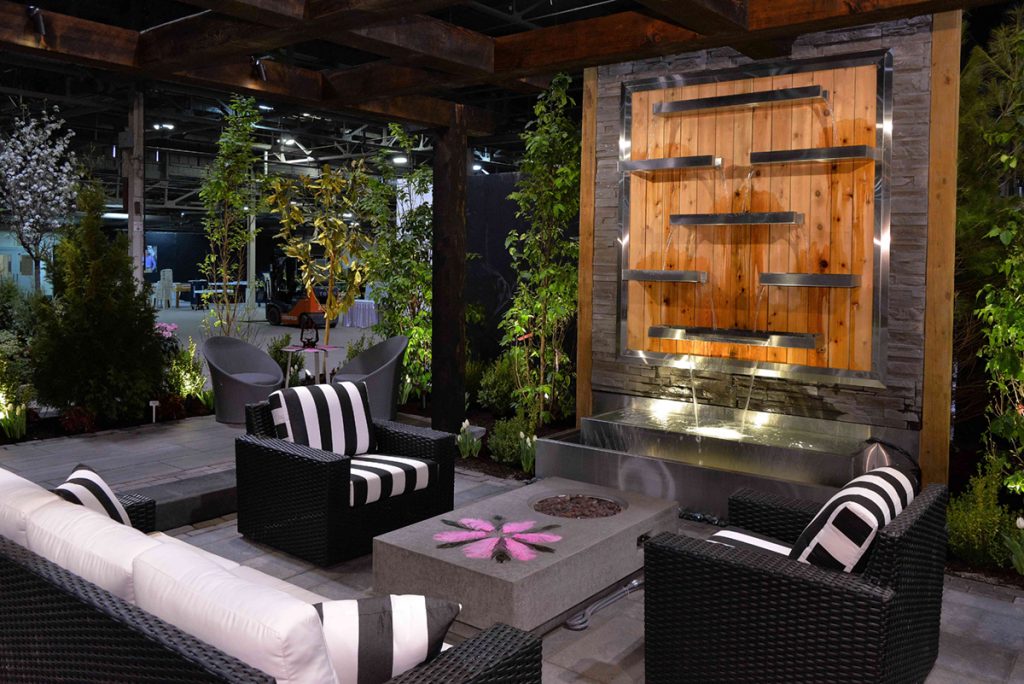
This is the intended message of Canada Blooms 2020. Themed Birds of a Feather, the nation’s largest celebration of flowers and gardens displayed front yard, backyard and balcony gardens adorned with bird-motif décor, dotted with bird baths and feeders, and planted with avian attractors.
Unfortunately, the beautiful gardens created through the imagination and hard work of Landscape Ontario and many top designers and landscapers could not be viewed by the 180,000 guests anticipated to attend the 24th annual Canada Blooms. The night before opening on March 13 at the Enercare Centre in Toronto, the COVID-19 outbreak shut it all down.
Before the gardens were dismantled, organizers scrambled to take photos and video (canadablooms.com) to share with the disappointed public. Since Windsor Life Magazine was not able to be on site to shoot our own photos per usual, we are glad to share Canada Blooms’ pictures on our pages.
Water features starred as focal points, emulating nature with meandering streams splashing into ponds, bubbling through rocks and cascading over rock ledges. More formal arrangements still retained organic appeal, with water pouring in a vertical sheet from an oxidized copper frame or flowing down metal tiers on a stone and cedar feature wall.
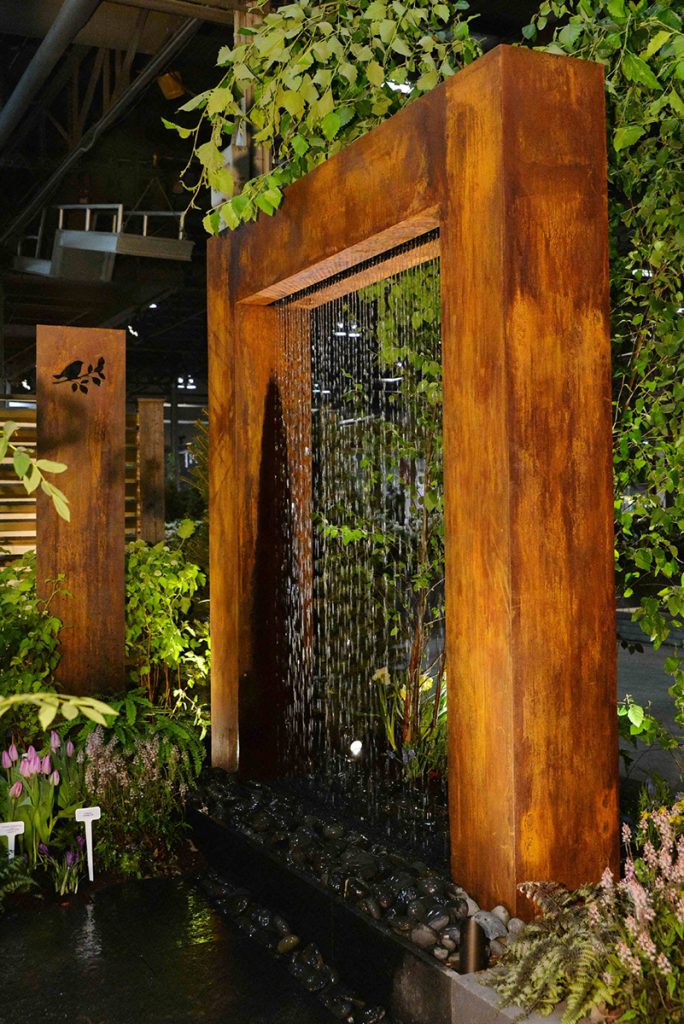
A curtain of water streams from an oxidized copper post and beam structure, providing a delightful spray to refresh the ferns and spring flowers blooming around its feet. 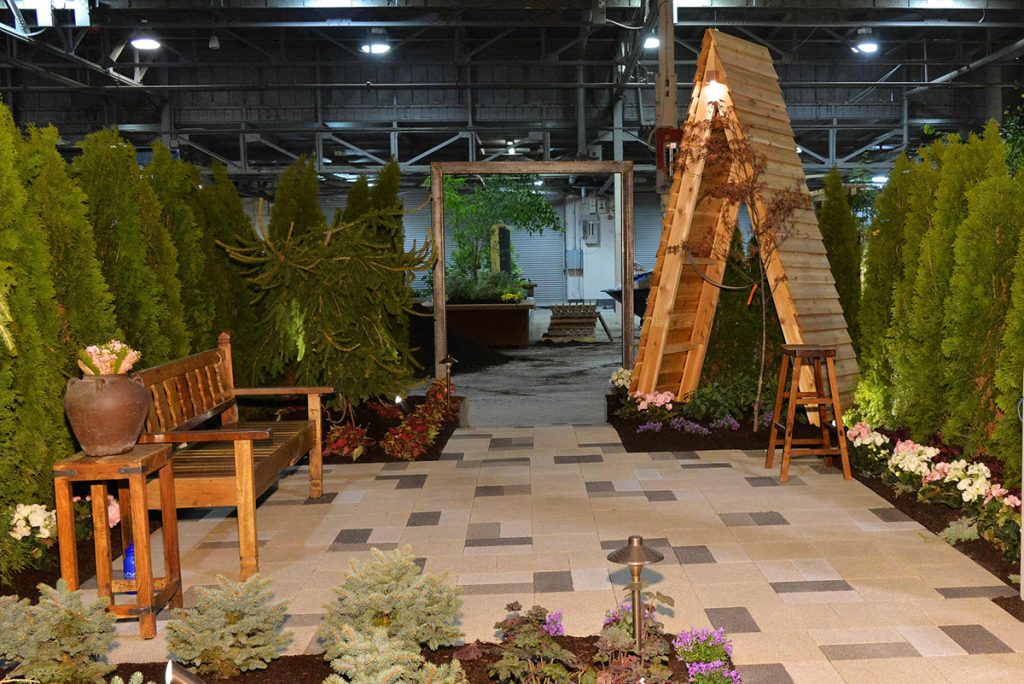
Standing tall, an A-frame structure shields tender flowering plants. Rustic wood notes also appear as the bench, tables and entry arbor; birds appreciate a solid perch when getting a drink or taking a bath. 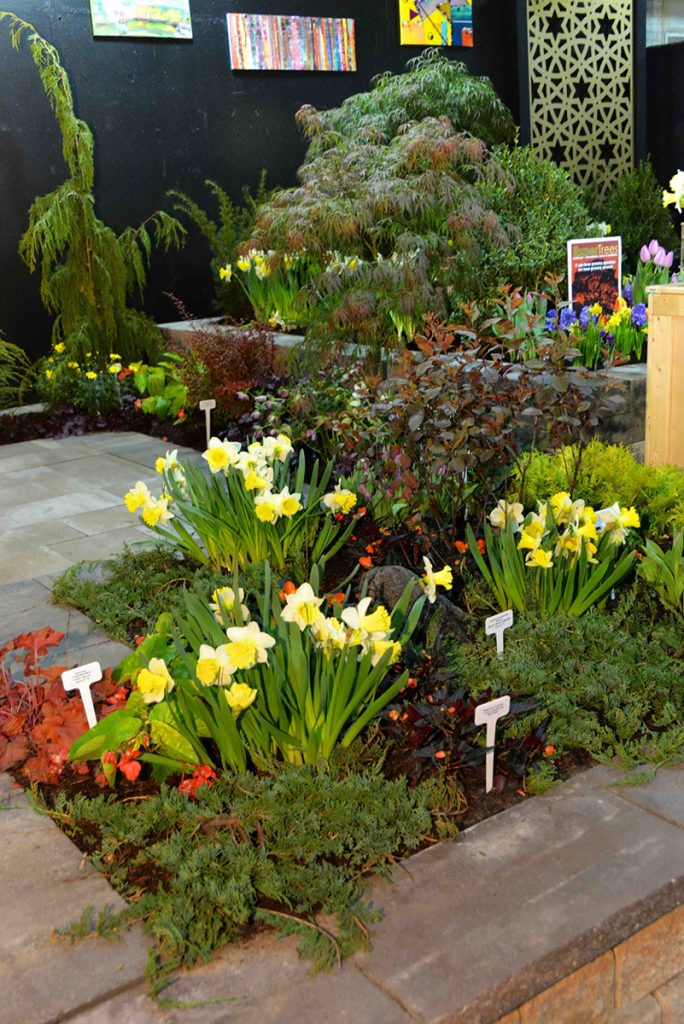
Flowers and shrubs planted closely together help crowd out potential weeds while leaving enough soil exposed for birds to find tasty bites at mealtime.
While durable stone pavers were everywhere as low maintenance hardscaping, edges were softened by bulbs, annual and perennials in bloom.
Staying at home as much as possible these days, both adults and kids are reveling in their personal patch of outdoors, whether it be an apartment balcony or a big backyard. The largest garden in the history of Canada Blooms, The Bienenstock Natural Playground, demonstrated just what can be accomplished with creativity and materials found in nature.
Although the show’s indoor garden sprawled over 8,000 square feet, an element or two of the interactive, barrier-free playground could be incorporated into a small space. A side by side chalkboard and mirror framed with lumber would encourage little artists. A scooped out narrow log became a water chute for making structures in the giant sandpit enclosed by more logs. Woodcarvers turned the huge trunk of a 250-year-old oak tree into a slippery slide for kids. More timber was fashioned into a tree fort and a ropes-and-log climbing mash. Grownups could watch while resting on sofas, also hewn from logs.
Smooth, hard pathways linked the entire garden, making it safely accessible for people with mobility issues and wobbly toddlers who find the world spins a bit too fast. The playground’s perimeter was bordered by trees common to a Carolinian forest and a winding stream rushing over river stone.
Maintaining that “exposure to natural environments has been proven to bolster immune systems, as well as cognitive function and development, while mitigating aggressive behaviour and catastrophic injury,” Adam Bienenstock, founder of Bienenstock Natural Playgrounds, commented, “Natural playgrounds like this acts as an ecological stop over for migrating birds and insects and as a place where kids will develop their love of nature.”
Encouragement to get growing also sprung from edible gardens interspersed with flowering plants and greenery. Canada Blooms has long been an advocate of raising food at home, from scattering lettuce seeds in a patio pot to digging a large bed to raise veggies to eat this summer and freeze or can for winter.
COVID-19 has prompted people who never handled a shovel before to plant pandemic gardens during the spring. Wanting to avoid grocery stores and be more self-reliant by growing their own vegetables and herbs, homebound Canadians flooded seed retailers with online orders.
Those who added flowers to their mix have also helped the birds who feed in their yards.
“Plants are a one-stop shop for food and shelter. Birds prefer fruits and seeds right off the plant, and most birds either build their nests in a tree, shrub or stand of grass, or they make their nests from pieces of it,” said Mark Cullen, a perennial host of Canada Blooms, author and gardening expect.
To attract birds to the backyard, Mark recommended livening up the landscape with colourful asters, black-eyed Susan (rudbeckia), purple coneflower (echinacea) and coreopsis – favourites of cardinals, finches and other songbirds. Even the perennials’ dead stalks left to stand in winter can be an important food source.
Softly swishing in the summer breeze, native ornamental grasses draw sparrows, finches and other small birds that snack on the seeds. Mark said, “Robins and sparrows pick up coarse blades to construct the main walls of their nest, then revisit for finer-textured blades to pad the soft lining of the interior.” He suggested planting big bluestem, little bluestem, northern sea oats or side oats. Left in place over winter, the grasses offer habitat to dark-eyed juncos and other birds not flying south.
Mulberry and serviceberry shrubs or small trees produce summer fruit and foliage that robins, waxwings and cardinals flock to when in need of a new home and a good meal. They also have a taste for the fall fruit of flowering dogwood and crab apple.
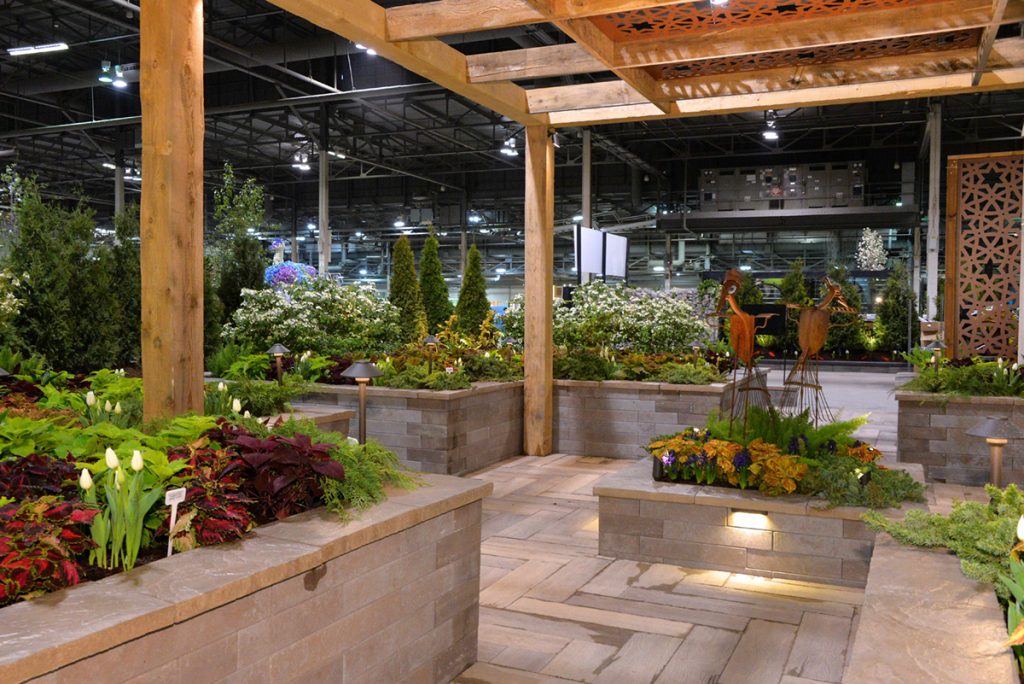
In the hands of an artist, a rusted shovel, rakes and other garden castoffs become a pair of bird sculptures gracing a raised bed. 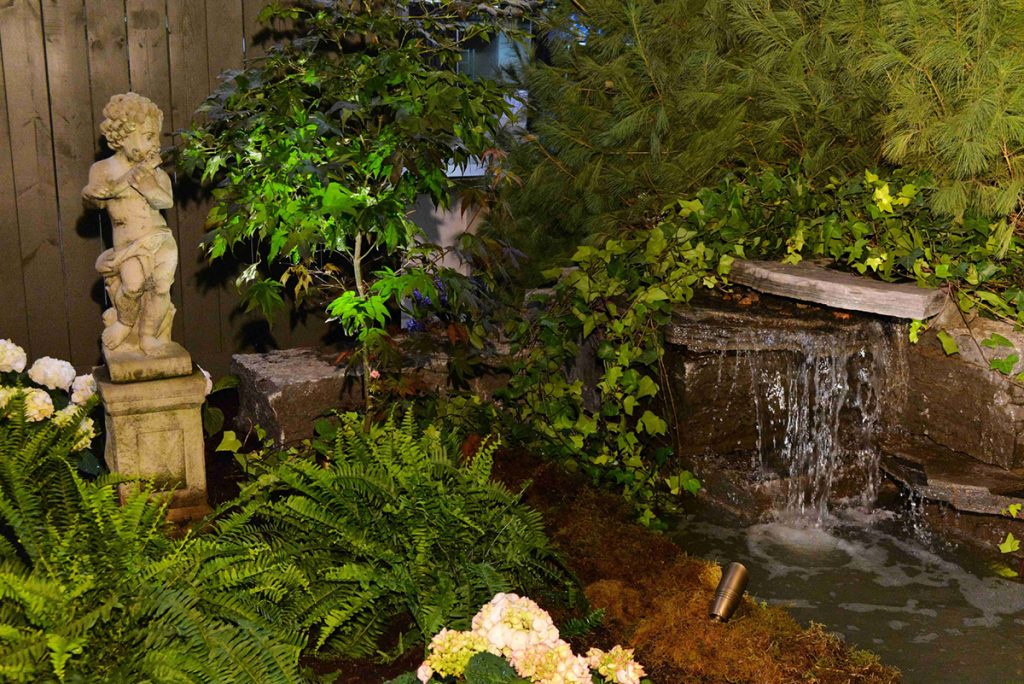
Tasks are made easier with rock slabs staggered to form a small waterfall that washes into a stream. 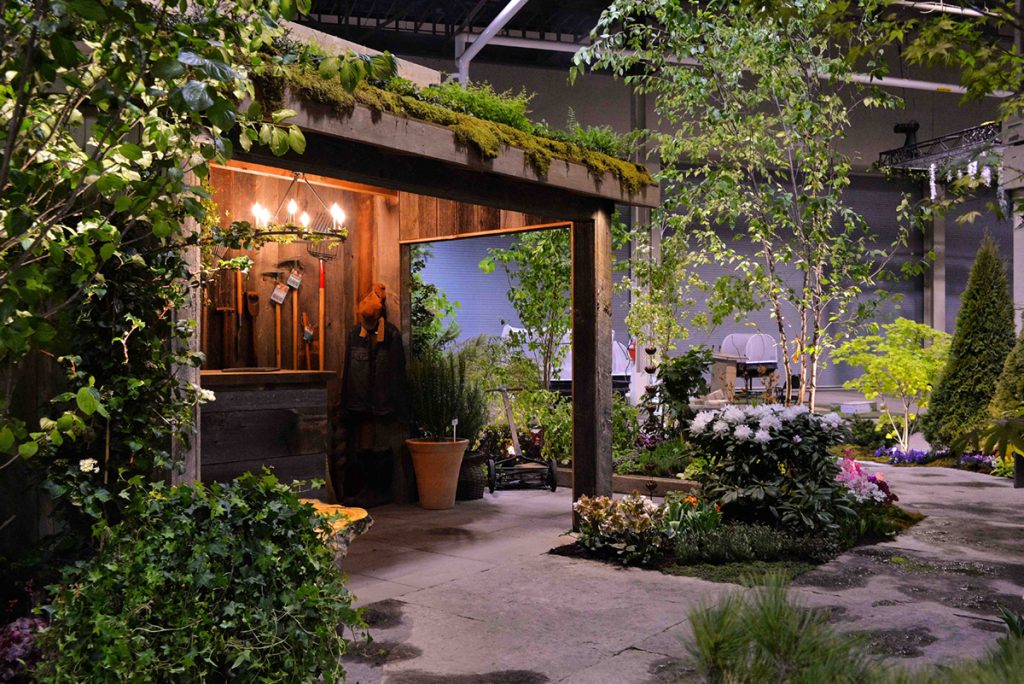
Tools are conveniently at hand in a garden shed with open access. The resident green thumb grows plants in beds sprouting between hard paving and upon the living roof.
Noting that birds don’t rely on local humans as their sole food source, Mark observed that they will appear when conditions are favourable. One or more strategically placed feeders near a window, sunroom or deck can set the stage for nature’s feathered little performers.
It’s possible to put out an avian casting call by purchasing specific seed known to attract certain birds.
Black oil sunflower seed is the food of choice for cardinals, black-capped chickadees, mourning doves, dark-eyed juncos, song sparrows and common grackles.
Red-breasted and white-breasted nuthatches, blue jays and downy and hairy woodpeckers enjoy suet and bird peanuts – although peanuts that people eat have salt that can harm birds.
House and purple finches, American goldfinches, common redpolls and pine siskins are attracted to Nyjer/black oil sunflower seeds.
“Birds will forgive you for letting the feeders go empty,” Mark assured. They do, however, need a bird bath, pond or other water source to drink and bathe.
Cedars, spruce and fir offer required shelter year-round. Mark also commended white oaks that produce edible acorns and nesting spots for woodpeckers, jays and wood ducks. Other beneficial species for housing birds include red maple or black, red and white spruce, gray, white and yellow birch or black willow.
Singing for their suppers and helping to keep down the bug population at home, birds can help us remember to slow down and observe. Being amongst these winged neighbours going about their business, heedless of alarming coronavirus case counts, is reassuring to humans adapting to the new normal. And it’s lovely to remember that we aren’t actually alone.


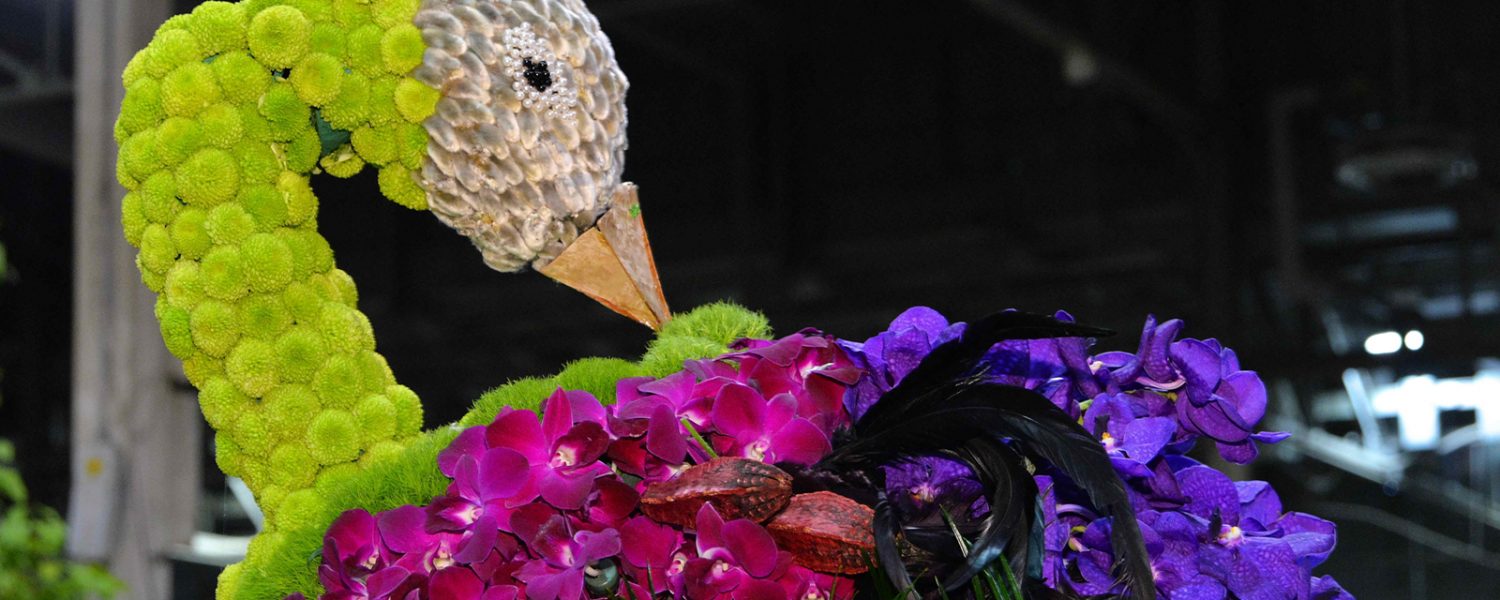

Add comment